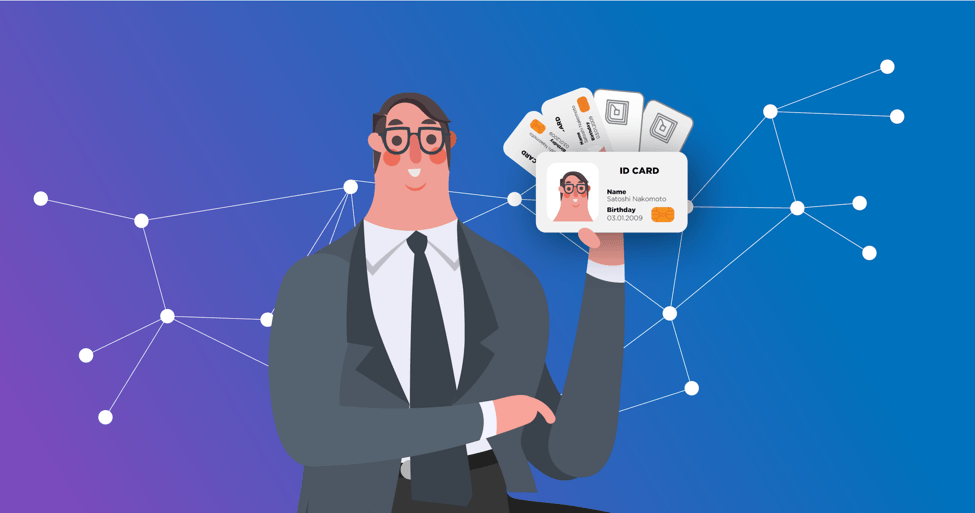Latest news about Bitcoin and all cryptocurrencies. Your daily crypto news habit.
 Photo by Sharon McCutcheon on UnsplashR E A L W O R L D U S A G EWhich questions must be clarified before Blockchain can find a place in the economy?
Photo by Sharon McCutcheon on UnsplashR E A L W O R L D U S A G EWhich questions must be clarified before Blockchain can find a place in the economy?
Many companies are currently still afraid to integrate blockchain technology into their processes. The main problem at the moment is the availability of data — many are not available in digital form. But how can the framework conditions be improved?
We are living in a digital era. From year to year, everything is becoming more digital and there is no doubt that this process will accelerate even further with the advent of blockchain technology. Blockchain has already shown us that we can store and transfer values without having to rely on third parties. But…
This leads to misunderstandings that we can later sell our apartment, cars or something like that about the kind of blockchain in which the trust tends towards zero like Bitcoin. This is impossible.
The question is why. And then we turn to the main theme of the article — what keeps Blockchain from being used on a grand scale?
The most important thing first — smashing the illusion
You have to bring things together. Bitcoin Blockchain is an unapproved blockchain, which means that anyone can join the network and participate in the validation of transactions, as well as verify the correctness of the database. In conjunction with the consensus mechanism, which allows participants to make an agreement without having to trust each other, Blockchain allows the existence of a completely trust-free and therefore independent environment.
The reason for this is that the Bitcoin blockchain only exists in a digital network. It does not interfere with other external networks. This is the point at which Blockchain can actually eliminate the need for trust.
It is not possible to remove trust from a blockchain-based system that has to do with external data (property rights, identity documents, invoices…), because so-called oracles are necessary that provide you with information and that you have to trust at least partially.
What does that mean?
This means that one should understand this comprehensively when talking about the wide use of blockchain in the real sector — it is not the trusted Bitcoin case. It is the case where Blockchain partially reduces the trust and, in combination with other technologies, creates a simple and secure management system, high resilience, non-deniability for all user actions and transparency of internal processes.
But before all this is possible, before we have any forms of national blockchains for e-passports and driving licenses or corporate blockchains that allow us to automatically receive our well-deserved wages, there are some challenges that need to be addressed.
We’re talking about a blockchain that allows interactions between users on your broad level — for example in administration. For this, a way has to be found how user actions can be linked to their identities.
Within the boundaries of an organization, this is not a big problem. But it becomes much more complicated at the country level or when we are dealing with a consortium of large companies. Here the interrelations between real people and their digital identities must be legally represented in order to be able to assign them their actions in the digital environment.
Estonia is already very far advanced in this respect. For two years now, the government has been actively implementing electronic ID cards and allowing residents to participate in elections with their help.
Digitization: everything in one place
It is obvious that all this will not work before we make it possible to standardize the process of digitizing data as well as its incorporation into the blockchain. Many of our data are already being digitized today, but they are stored in many different databases. So if you want to make a request to a customer whose data can be found in an external database, you could solve this problem with a call — but this cannot be seen as a digital process.
We, therefore, need legally valid approaches that enable the retrieval of digital data by means of automatic inquiries and that release digitally signed data. However, this would require an extremely high number of oracles to verify the correctness of the data. The more oracles there are, the less likely an agreement is and the more trustworthy their data is.
What to keep in mind
A well-structured blockchain protocol automatically assumes that the data already stored in it is real and is never responsible for what is stored in the blockchain. So if an attacker manages to smuggle false data into the blockchain, it will be treated as real as others.
With the Bitcoin blockchain, authenticity can be guaranteed because it has no interaction with external databases. All data (BTC coins) are generated within the network under conditions defined by the protocol and exist only in this network. Consequently, there are no weak points.
Whenever outgoing data is stored in a blockchain, the question of trust arises. This is a weak point for which there is still no extensively tested approach.
Joint decision-making
Bitcoin is a good example of how a distributed environment makes it easy for subscribers to make agreements, for example on protocol updates. Anyone can suggest their own. If the majority agrees, the update can be done. This is a proven approach that Bitcoin has been using for nearly ten years. The community behind it has a common motivation — to increase capacity and security and to reduce transaction confirmation time.
Companies have their own interests, especially commercial and political. In muddled situations, the path must be taken through a court of law. But blockchain does not work that way.
The moment a blockchain-based platform is to be set up for a consortium of a few large companies, the way in which joint decisions can be made even in the simplest and most uncritical situations must be determined. How will votes be conducted and how will votes be weighted?
Not to mention that each person has his or her own idea of a situation, so, for example, the same object can have different names.
 Photo by Icons8 team on Unsplash
Photo by Icons8 team on Unsplash
These are the reasons why so few blockchain applications have found their way into business so far. There are no completely verified approaches to how something should work. Nevertheless, some companies are working their way up because they know that the future lies in the blockchain.
There can be no success without a certain risk.
The legally binding digital environment
One needs a uniform legal basic construct. Some regulators have already broken the ice and are working on the renewal of the laws that look at the turnover of cryptocurrency in the world economy. But that is only part of the story.
It is important that the new approach takes into account the existence of decentralized environments with all their peculiarities such as distributed responsibilities and joint decision-making. Currently, many block-chain-based projects are beyond the legal framework.
Conclusion
We have fully considered the basic requirements for blockchain application. Let’s look at them again: Digitization of all business processes, uniform identity standards in cyberspace, a uniform process for joint decision-making, and finally the provision of a legal basis that allows all of the above.
Once all the problems are solved, we will have a comprehensive, strong and flexible infrastructure that will enable us to take business relationships and interaction in society to a whole new level.
Bitcoin is here to stay
What Prevents Blockchain from being Used in the Real World? was originally published in Hacker Noon on Medium, where people are continuing the conversation by highlighting and responding to this story.
Disclaimer
The views and opinions expressed in this article are solely those of the authors and do not reflect the views of Bitcoin Insider. Every investment and trading move involves risk - this is especially true for cryptocurrencies given their volatility. We strongly advise our readers to conduct their own research when making a decision.
